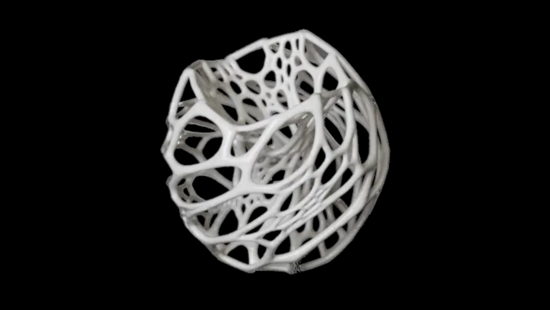ABS ESD Material Details

General Informations
ABS-ESD is a material designed for specific ESD (electrostatic discharge) applications. In many work environments, electrostatic discharge can generate high voltages and potentially lead to electrical overload in electronic components. ESD protection primarily serves two purposes: to dissipate and ground static charges and to shield electronics from electromagnetic radiation and resulting interference.
ABS-ESD combines the excellent properties of ABS material with the protective attributes of ESD, making it particularly suitable for electronic enclosures and connectors.
Key Characteristics of ABS-ESD:
- Effective ESD protection
- High resistance to electrostatic discharge
- Combines the benefits of ABS material
- Ideal for electronic enclosures and connectors
ABS-ESD serves as a crucial material in various industries where the protection of electronic components from electrostatic discharge is paramount. It ensures the safe operation and longevity of sensitive electronic equipment.
Printing in ABS ESD
Minimum Wall: 1 mm
Smalest Detail: 0.4 mm
Layer hight: 0.2mm
Max Print size: 256 x 256 x 256 mm
Tollerance: 0.2% min ±0.3 mm
Delivery Times: Typicaly 4-5 Businessdays

Pro`s and Con`s
Pro
- ESD Protection: Offers effective protection against electrostatic discharge.
- Sturdy yet Flexible: Suitable for "Klick" and "Snapfit" applications, combining stability with flexibility.
- Abrasion Resistant: Resistant to wear and tear.
- Polishable: Can be polished for a smoother finish.
- Tough: Exhibits toughness and durability.
- Impact Resistant: Can withstand impacts.
- High Heat Resistance: Maintains structural integrity at high temperatures.
- UL92-HB: Meets UL92-HB flammability standards.
- Resistant to Weak and Strong Alkaline Substances: Suitable for applications involving exposure to alkaline solutions.
Con
- Low Resolution with FDM Technology: Fused Deposition Modeling (FDM) can result in lower resolution prints.
- Susceptible to Warping: Large parts may experience warping during printing.
- Vulnerable to Solvents (Acids): Can be sensitive to certain solvents, particularly acids.
- UV-Sensitive: May degrade when exposed to ultraviolet (UV) radiation.
Applications of ABS ESD 3D Print

- Electronic enclosures
- Connectors and sockets
- Components requiring ESD protection
This material plays a vital role in safeguarding electronic devices and circuits from potentially damaging electrostatic discharges, ensuring the reliability and functionality of electronic systems.
- Electronic Enclosures: ABS-ESD is commonly used to create protective enclosures for electronic components and devices, offering electrostatic discharge protection.
- Connectors: It's suitable for manufacturing connectors that require ESD protection in various electronic systems.
- Switches: ABS-ESD can be used to produce switches for electronic equipment that need to be resistant to electrostatic discharge.
- Shielding: Due to its ESD protection properties, it's used for creating shielding components to prevent electromagnetic interference (EMI) in electronic devices.
- Antistatic Parts: ABS-ESD is employed to fabricate various antistatic components and parts for electronics and industrial applications.
These applications showcase the importance of ABS-ESD in ensuring the safety and functionality of electronic devices and components that are sensitive to electrostatic discharge.
Technical specifications
General Properties
Property | Test Method | Value |
Density | ISO1183, GB/T1033 | 1.12 g/cm3 at 23 °C |
Melting Point | 210°C, 2.16kg | 9-14 g/10min |
Shore Hardness | ISO 7619-1, GB/T 531.1 | Ca. 72 D |
Light Transmission | N/A | N/A |
Flame Resistance | N/A | N/A |
Electrical Properties
Property | Test Method | Value |
Surface Resistance | ASTM D257 | 107 – 109 Ohms/m² |
Mechanical Properties
Property | Test Method | Value |
Elastic Modulus (X-Y) | ISO 527, GB/T 1040 | 2174 ± 285 MPa |
Elastic Modulus (Z) | ISO 527, GB/T 1040 | 1835 ± 36 MPa |
Tensile Strength (X-Y) | ISO 527, GB/T 1040 | 33.3 ± 0.8 MPa |
Tensile Strength (Z) | ISO 527, GB/T 1040 | 25.4 ± 0.8 MPa |
Elongation at Break (X-Y) | ISO 527, GB/T 1040 | 2.7 ± 0.4% |
Elongation at Break (Z) | ISO 527, GB/T 1040 | 2.4 ± 1.2% |
Flexural Modulus (X-Y) | ISO 178, GB/T 9341 | 2844 ± 411 MPa |
Flexural Modulus (Z) | ISO 178, GB/T 9341 | N/A |
Flexural Strength (X-Y) | ISO 178, GB/T 9341 | 72.8 ± 0.7 MPa |
Flexural Strength (Z) | ISO 178, GB/T 9341 | N/A |
Impact Strength (Charpy X-Y) | ISO 179, GB/T 1043 | 12.6 ± 1.1 kJ/m2 |
Impact Strength (Charpy Z) | ISO 179, GB/T 1043 | 10.5 ± 0.4 kJ/m2 |
Thermal Properties
Property | Test Method | Value |
Glass Transition Temperature | DSC, 10°C/min | 101.1 °C |
Melting Temperature | DSC, 10°C/min | N/A |
Crystallization Temperature | DSC, 10°C/min | 113.5 °C |
Decomposition Temperature | TGA, 20°C/min | >380°C |
Vicat Softening Temperature | ISO 306, GB/T 1633 | 103.9 °C |
Heat Deflection Temperature (1.8MPa) | ISO 75 | 98.2 °C |
Heat Deflection Temperature (0.45MPa) | ISO 75 | 99.6 °C |
Thermal Conductivity | N/A | N/A |
Thermal Shrinkage Rate | N/A | N/A |

